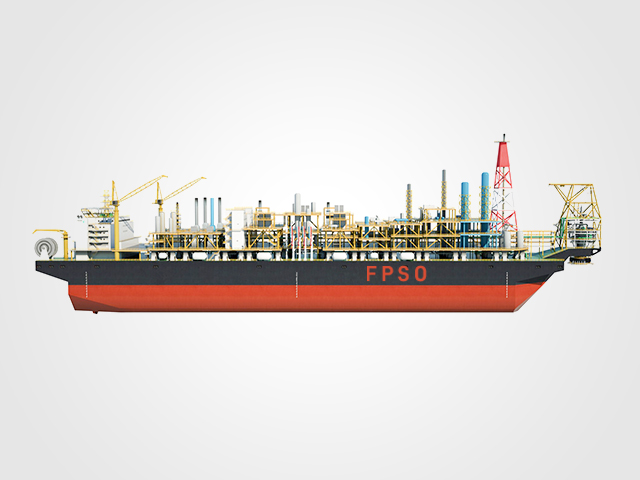Does Stainless Steel Rust?

Does stainless steel rust? The answer is yes. While stainless steel is known for its rust resistance, it can indeed rust.
Here's why stainless steel is hard to rust: Stainless steel is an iron alloy containing chromium, molybdenum, carbon, nickel, nitrogen, and other elements. The key ingredient is chromium, present in at least 10.5%. This chromium reacts with oxygen to create a protective layer on the surface. This layer acts as a barrier, preventing oxygen and water from reaching the underlying metal and causing corrosion. The content of nickel and molybdenum will further improve the performance of the oxide.

The table below shows the major chemical composition comparison of ASTM A479 304 stainless steel (S30400) and 316 stainless steel (S31600). The composition of molybdenum of 316 stainless steel provides better resistance to chlorides.
| Material | Composition % | |||
| C | Cr | Ni | Mo | |
| ASTM A479 304 SS | ≤ 0.08 | 18 - 20 | 8 – 10.5 | / |
| ASTM A479 316 SS | ≤ 0.08 | 16 - 18 | 10 - 14 | 2 - 3 |
What is rust? Rust is the result of an oxidation reaction. When the iron incorporated in stainless steel reacts with water and oxygen, it produces hydrated iron oxide, also known as rust. The main cause of rusting in stainless steel is typically the damage to the surface's protective oxide layer. There are several common scenarios that could result in stainless steel starting to rust.

Mechanical damage
The protective layer formed by chromium reacts with oxygen is actually very thin. It can be destroyed by mechanical damage such as scratches. After the protective oxide layer is damaged, the stainless steel will be exposed to the external environment, making it highly susceptible to rust, especially in low-oxygen environments where the oxide protective layer cannot re-form promptly.

Contact with different material
When stainless steel contact with different materials in an electrolyte, galvanic corrosion may occur. If there is a large potential difference between the two materials in the electrolyte, the oxide layer on the surface of stainless steel will begin to break down. In this case, the stainless steel will rust more rapidly under the action of galvanic corrosion. To avoid galvanic corrosion, it is advisable to combine materials that are the same or have a smaller potential difference.
Additionally, galvanic corrosion may indirectly lead to rusting of stainless steel. Carbon steel particles are one of the sources of contamination during the manufacturing and application processes of stainless steel. When stainless steel contact with carbon steel or tools that are contaminated by carbon steel particles, these particles may embed in the surface of the stainless steel, damaging its oxide layer. Due to galvanic corrosion between stainless and carbon steel, carbon steel particles on the surface of stainless steel will rapidly rust. If not addressed promptly, this could lead to rust and pitting corrosion in stainless steel.

Exposure to high temperature
Exposure of stainless steel to high temperatures accelerates the reaction rate between chromium and oxygen, causing continuous precipitation of chromium elements on the surface as they react with oxygen to form a thicker chromium oxide layer. This process reduces chromium content in the surface area of stainless steel, resulting in a chromium-depleted region. Due to the high thermal expansion rate of austenitic stainless steel, the thick protective layer of chromium oxide may crack and spall during thermal cycling, exposing the depleted chromium region to environmental conditions and causing rusting. Additionally, high temperatures can cause precipitation of chromium elements at grain boundaries in stainless steel where they combine with carbon to form carbides, similarly leading to chromium-depleted regions around grain boundaries and ultimately resulting in intergranular corrosion. For example, during welding processes, attention should always be paid to temperature control to avoid thicker oxide layers on the surface and carbide precipitation at grain boundaries. To minimize occurrences of intergranular corrosion, low-carbon stainless steel should be used whenever possible along with the use of shielding gases to prevent excessive oxidation layers.

Harsh environments
Some environments are highly corrosive, such as those with extremely strong chlorides. Chloride ions can break down the protective layer of chromium oxide on the surface of stainless steel, leading to pitting and crevice corrosion and making it more susceptible to rust. That’s why 304 stainless steel is not recommended for offshore applications with high chlorine content. Due to the fact that molybdenum can enhance the resistance of stainless steel to chloride, it is recommended to use 316 stainless steel containing molybdenum or 6-mo alloy with higher molybdenum content for offshore environments.
Summary: Stainless steel rusts. Good design, fabrication, and maintenance practices can minimize the risk of corrosion in stainless steel. If the working environment is harsh or the medium is corrosive, FITOK can provide products made of super duplex stainless steel, alloy C-276, 6Mo, alloy 400, alloy 625, alloy 825, etc. to meet your requirements.
Related Articles:







.jpg)
.jpg)
 Back
Back 

